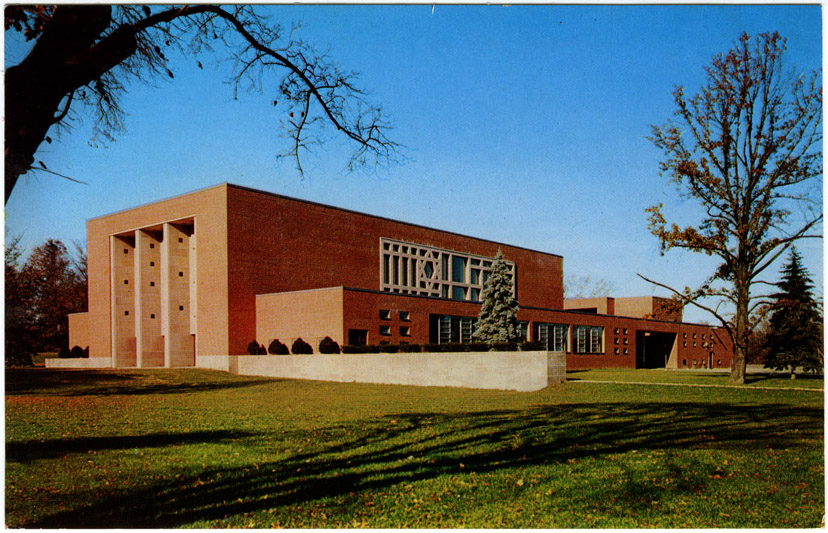9.6 Baltimore, Maryland
Baltimore Hebrew Congregation, 7401 Park Heights Avenue
Percival Goodman, architect, 1953
L. L. Cook Co., Milwaukee, Wisconsin, publisher; no date (both postcards)
These views show the exterior and interior of the third of three distinguished homes of Baltimore Hebrew Congregation, the city’s oldest congregation. With this modern suburban building, the congregation once again took the lead in forging a new style for Baltimore’s Jews. In choosing Percival Goodman as the architect and a monumental modern style, the congregation made a clear statement that they were looking to the future of post–World War II America, not the past.

While in the exterior view the building appears as a single massive brick block, it is in fact a series of structures and spaces that wrap around a central court, like that created by Mendelsohn at the near-contemporary B’nai Amoona in St. Louis, Missouri.
The Baltimore Hebrew design owes much to the severe geometric modernism common in the pre-war years, familiar in America in the stripped forms of Art Deco buildings, including courthouses and post offices built in the 1930s. In Europe, this approach had been used by Jewish architects for synagogues and community buildings and could be seen in the work of Fritz Nathan in Frankfurt and elsewhere, and Felix Ascher and Robert Friedmann in Hamburg. Nathan adapted the style for his first synagogue in the United States, the Sons of Israel Congregation in Woodmere, Long Island, New York, an impressive and innovative Orthodox shul and the first truly modern synagogue of the post-war period.
In almost all of Goodman’s synagogue projects, beginning with Baltimore Hebrew Congregation, the architect strove to integrate art into an architectural framework. The relief sculpture he commissioned from George Aarons was in keeping with the type one would find in many public and commercial works in America and Europe in the 1930s. Goodman had determined the placement of the eight reliefs before Aarons ever was given a subject (Jewish ethics) and began his work. As was often the case in Goodman’s synagogues, the artwork was subject to the architecture.
